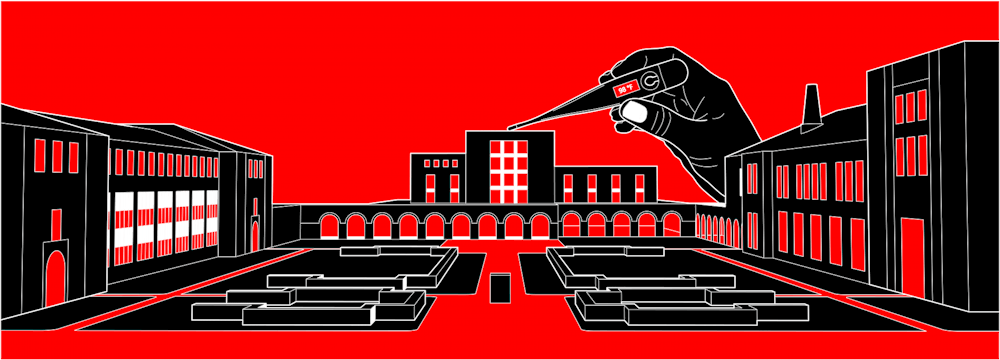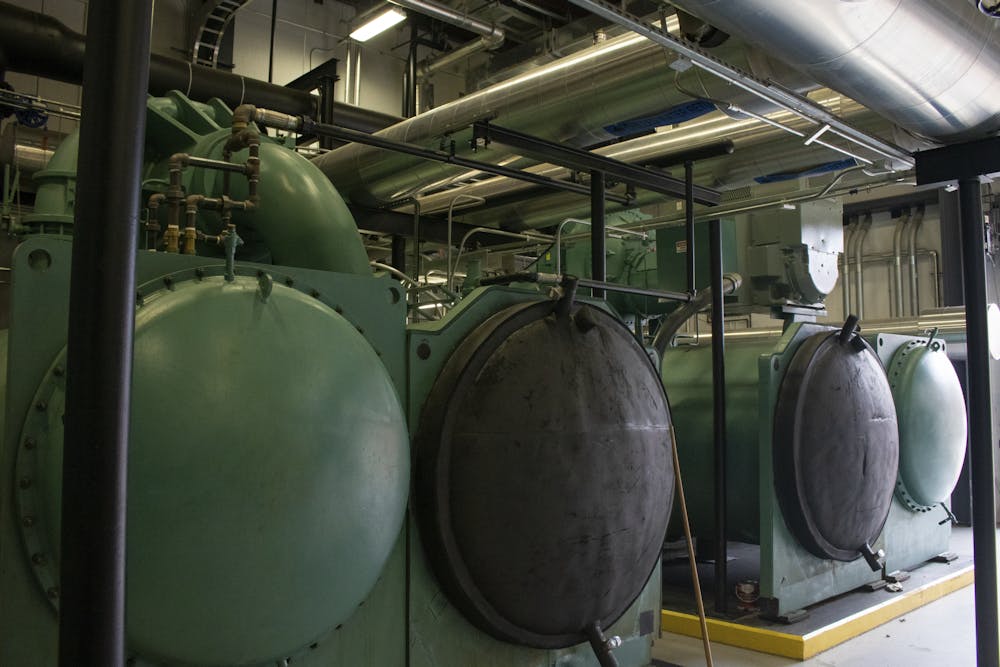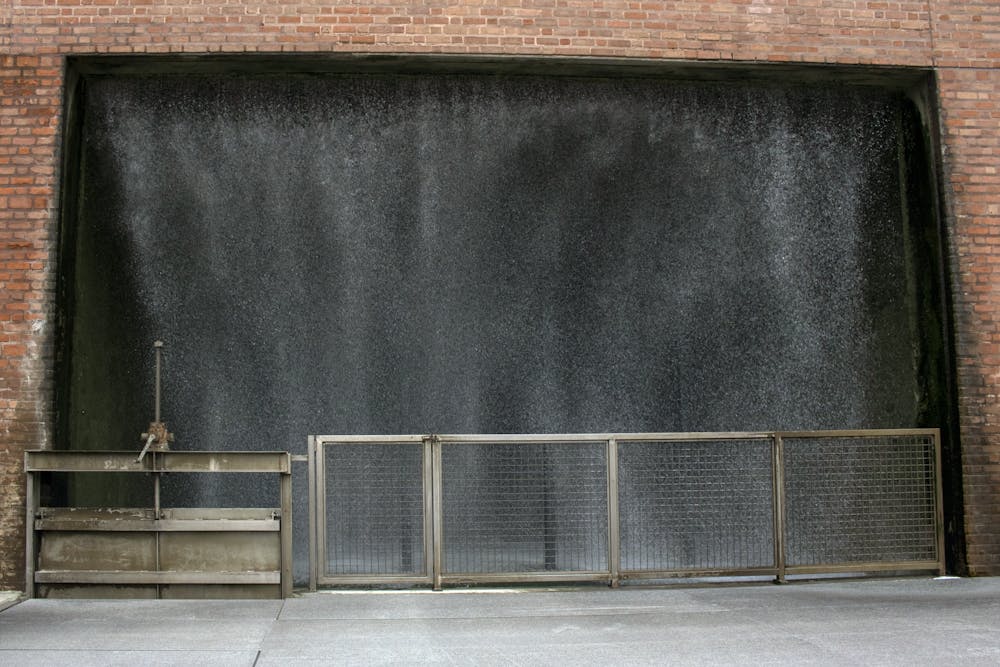First week of school: Campus has no cool

Due to ongoing construction at the Central Plant, the campus has experienced disruptions in air cooling at both residential and academic buildings over the past week, exacerbated by a heat wave that culminated in a record-high 83 degrees on Wednesday.
Amna Ali, a junior at Wiess College, said she left campus and went to her family home in Houston to avoid the indoor heat.
“I had to keep my window open because my room was so hot,” Ali said. “I actually got heat rashes because I’m pretty sensitive to the heat, so I ended up just going to my home. A rat actually got on the windowsill because my room window had been open all day.”
Before the start of the semester, the Facilities Engineering and Planning team for Rice University sent an email to all students and faculty to limit their air conditioning use until Feb. 14. FE&P sent two follow-up emails during the first week of the semester with a more urgent request for staff and students to limit their air conditioning use in order to supply critical cooling needs on campus such as for temperature-sensitive research in labs.
The reason for the project was to fix a compromised pipe which is integral to the air cooling capacity of the Central Plant, according to Richard Johnson, the director of the Administrative Center for Sustainability and Energy Management at Rice.

“The pipe that connects the Central Plant to its cooling tower is in danger of failing,” Johnson said. “If it were to fail, we would lose the entire cooling capacity of the Central Plant for an extended period — weeks, maybe even months. If that were to happen during the summer, the impact on campus would be severe.”
Without sufficient cooling capacity to both preserve critical research in labs as well as cool residential colleges and administrative buildings, the FE&P team has had to decide how to allocate the limited resource across campus, according to Johnson.
“If the demand for chilled water is not reduced as much as it needs to be, we’ve sometimes had to strictly limit the amount of chilled water flowing to a building, which has the effect of essentially turning off the air conditioning,” Johnson said. “That’s why full participation from all students is so important. It helps reduce the need for such drastic actions.”
Kaarthika Thakker, a Lovett College senior, said that she did not understand the methodology behind asking students to significantly alter their AC use and expecting full compliance.
“It’s a bit ridiculous that they just asked nicely for everyone to keep their air conditioning off. No one is going to do that without any incentive,” Thakker said.
The humidity and unexpected heat has caused problems for faculty, staff and students.
As a result of the high indoor temperatures, Housing and Dining closed Sid Richardson College Kitchen last Thursday because they deemed it too hot for the staff to work there safely, according to Sid Richardson President McKinzie Chambers.
According to Sandra Parsons, a residential associate of Will Rice College, the humidity of the past few days in the classes she teaches has affected the overall environment.
“I teach three classes in Sewall [Hall]and one of the rooms [last week] was unbearable,” Parsons, a psychology faculty member, said. “I’ve definitely seen the effects in the classroom: when it’s really hot, students kind of just start falling asleep, especially since I teach right after lunch.”
Thakker, who is also the KTRU station manager, described the past few days working in the station as miserable.
“The first few times I went in there it was unbearable,” Thakker said. “We’ve put fans on all our equipment and broadcasting tools to make sure it doesn’t overheat, and we’re leaving the door open.”
Thakker said that the situation has made working at KTRU difficult during this time.
“The whole point of KTRU is to be able to hang out and have fun,” Thakker said. “Since we’re a radio station, we’re essential and responsible for being online at all times. So there’s no real option for us other than to just get through it.”
KTRU business manager and Coffeehouse employee Harrison Lorenzen said there was a lack of communication between FE&P and KTRU.
“We were told that KTRU might be considered as an essential space alongside labs, because of all the equipment and vinyls we have. One would assume that Coffeehouse, which has 70-80 people at a time, would be essential too but we didn’t receive any priority at all.”
Rice Coffeehouse employees have described their shifts as more challenging, sometimes requiring an additional one or two people on shifts to handle the line better and for the employees to be able to get water more often, according to Coffeehouse general manager Brendan Wong.
Wong said that Coffeehouse has seen the effects of the project most clearly through the kinds of orders that customers place.
“It’s early January and most people are actually ordering iced drinks — there have barely been any hot orders,” Wong, a Jones College junior, said.
Wong said Coffeehouse received help from other places, such as the Rice Student Center, who provided them with a fan to keep conditions cooler behind the bar.
The Construction Project
Johnson said the construction project started immediately after finals ended and continued over winter break, with the crews working 16-hour days, six days a week.
The FE&P team decided that this was the safest time to do the project, as temperatures have historically been low this time of year.
According to Johnson, FE&P’s analysis suggested that the reduced cooling capacity would not be an issue as long as outdoor temperatures stayed in the low 70s.
“We conducted a thorough historical analysis of chilled water consumption on campus for the months of December to February,” Johnson said. “Then we factored in weather data. If they reached the upper 70s and especially if they exceeded 80 degrees, we’d have a much more challenging situation.”
Last week on Wednesday, the temperature reached a January record-high 83 degrees, according to The Weather Channel.
According to Johnson, much of the infrastructure installed at Rice in the 1970s and 1980s, including the compromised pipe, was designed to save money and was therefore not constructed from quality material.
“If I could go back in a time machine, I would go back and say, ‘choose a better, more durable pipe,’” Johnson said. “A lot of the infrastructure that happened on campus in the ’60s, ’70s, and ’80s was done on the cheap. Staffing was very thin — everything was about keeping tuition as low as possible.”

Hugh Ton-That, director of plant operations and university engineer, said that because this pipe was made of lower quality fiberglass as opposed to the carbon steel typically used in this type of construction, it did not last very long, but the replacement should last much longer.
“I don’t really know the exact decision why this pipe was put in back in the day. The story I heard was that this was just a value engineering item, to save some money,” Ton-That said. “We had a couple of leaks during the 1990s and early 2000s as a result.”
While the weather has cooled down, Johnson said the campus is still at risk of repeat incidents of overheating until the project is completed.
According to Johnson, during their analyses before beginning the project, they decided that renting a temporary cooling tower for the entire campus was not worth it given the low chance of such high January temperatures.
“Reserving a temporary cooling tower for this project to allow for more cooling capacity would have cost about $750,000,” Johnson said. “Given the high cost of reserving a backup cooling tower, it was the right decision [not to reserve one] and we’d do it again.”
The project still has approximately three and a half weeks until its completion.
Assuming reasonable temperatures, Johnson said the South Plant has enough cooling capability to provide for the campus needs during that time.
“It appears that for the rest of the month, daytime highs will be in the 50s and 60s,” Johnson said. “The deadline for completing the project is Friday, Feb. 14. Unless we encounter unexpected issues, it’s quite possible our Central Plant cooling capacity will be back online a few days before that.”
More from The Rice Thresher

Worth the wait: Andrew Thomas Huang practices patience
Andrew Thomas Huang says that patience is essential to being an artist. His proof? A film that has spent a decade in production, a career shaped by years in the music industry and a lifelong commitment to exploring queer identity and environmental themes — the kinds of stories, he said, that take time to tell right.

Andrew Thomas Huang puts visuals and identity to song
Houston is welcoming the Grammy-nominated figure behind the music videos of Björk and FKA twigs on June 27.

Live it up this summer with these Houston shows
Staying in Houston this summer and wondering how to make the most of your time? Fortunately, you're in luck, there's no shortage of amazing shows and performances happening around the city. From live music to ballet and everything in between, here are some events coming up this month and next!

Please note All comments are eligible for publication by The Rice Thresher.